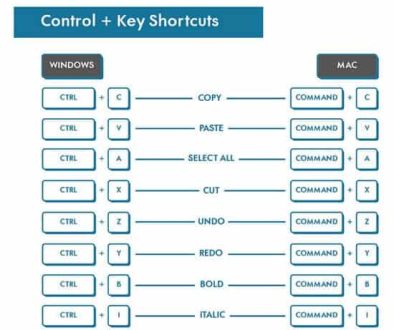How to Launch an Ecommerce Store and Keep Costs Low
Launching your own online business has become cheaper and more accessible than ever before. Easy-to-use online environments make creating your store simple, whatever your web design or business experience may be. Website themes and tools make your job a lot easier — giving customers a better website experience, without the need for months of expensive development work.
With just a little bit of care and attention, you can create excellent content for your domain and social media. Customer engagement is about commitment, not cost. You can set up a successful e-commerce store online with a tight budget if you plan, scale, and know how to do things on the cheap — and here’s how…
Ruthless Planning and Budgeting
Saving money starts with tracking money.
Don’t launch without a financial plan: and that means you need a budget. Budgeting will ensure you don’t spend money that you don’t have — it will force you to keep outgoings to an absolute minimum. It’s almost too easy to get caught up in Upwork fees and subscription costs — be ruthless and cull expenses to become a genuine bootstrapper.
- Make a list of all maintenance costs, like hosting, app and plugin expenses that you will need to pay out every month: where is your breakeven point? Make a list of any additional costs like SEO, PPC, social media marketing, web development, and so on. You can use a simple spreadsheet to start with or invest in some business accounting software like Quickbooks to help track your expenses. Once you have an overall picture, you can begin to eliminate non-essential costs or rethink where you’re currently spending money.
- Forecasting: what do you want to make (and how fast)? Take a look at this guide on forecasting for your company; you may find it useful to predict growth figures when making decisions about current investments. Once you’ve got a number down on paper. It will help to work backward and determine how much you should be spending to get there.
- What happens if you want to end your service or subscription? Are you in control of all the contracts you’ve signed? Low-cost options could prove to be more expensive in the long run, so make sure you read the small print. Some pay-as-you-go solutions are more scalable than others. So make sure that what you’ve chosen ones that give you room to grow.
Pick Your Online Platform Based on Audience

There are lots of different options out there when it comes to picking what platform you want to use for sales. Consider carefully where your customers are likely to be, and what their purchase habits are. Simply going for the option, you find the easiest won’t be a smart move unless it’s the one your customers prefer too.
To make money fast, you need to deliver an environment that draws shoppers in. If you already have a successful website with good traffic, capitalize on this by driving traffic to your new store (or build it on the same domain).
- Amazon is always a popular place to start selling, but if you want to scale your business in the future, then platforms like this can actually stunt growth. If you’re going to focus on marketplace selling mainly. Consider whether investing in a few at once may be a wiser move. You can trade on any of the big ones, and then also find smaller, niche marketplaces to help diversify income. Seller fees aren’t huge (often you only pay out a percentage of sales as fees). So this is a great way to get set up fast and make some quick sales.
- With WordPress, you can transform your website or blog into an e-commerce store with minimal hassle — browse through hundreds of themes and customize them to your heart’s content. Invest in e-commerce plugins within the WordPress ecosystem. They’ll help you market and manage your store better, saving you both money and time. (You can even use a Shopify buy button and add it to your existing WordPress site — here’s how you can benefit from Shopify as a WordPress user). Whatever option you go for, make sure that you balance ease with uniqueness. You can use a free theme, but you will need to add some features and personality with your brand.
- You can even sell through your Facebook page/ group, or focus most of your efforts on product pins on Pinterest. Social selling is a great way to combine marketing and sales, and should form part of any modern e-commerce strategy. Great social selling is about audience targeting and consistency, not huge budgets.
Your sales platform needs to be sustainable. It needs to be something that you will find easy to market and manage. Don’t spread yourself too thin too soon.
Learn Things Yourself and Be Smart About Outsourcing
To keep costs as low as possible, learn to do as much as you can by yourself. Outsourcing is great, but costs quickly mount up if you don’t know enough to keep freelancers in check. Empower yourself with e-commerce knowledge by watching online videos and webinars, and take some free courses in marketing and SEO.
- Be careful about investing in SEO: you need a good SEO strategy for your store. But you don’t want to get sucked in and pay out for the wrong kind of SEO (like aggressive link building or directory registrations). Spend a bit of money taking some consultancy and 1-1 courses with experts and see if you can implement their advice for yourself.
- Use free tools to help manage marketing campaigns for your store. Tweetdeck and Hootsuite are great options for scheduling social media, and email tools like MailChimp are great for professional-looking email campaigns. You don’t have to upgrade and go for more expensive immediately, premium accounts. Test things out in beta mode and see how much value you can squeeze out of free accounts.
- If you set things up correctly and define clear editorial goals, you can outsource small tasks like social media and blogging reasonably quickly. Try to find a young copywriter who’s looking for marketing experience, or go out looking for freelancers. Taking time-consuming tasks like posting and updating off your plate. Will help you invest more time in business strategy and sales.
- For e-commerce, it’s always worth investing in retargeting and pop up plugins that will maximize the average purchase value — make the most of every sale.
- If you’ve reached a point where you feel comfortable outsourcing your fulfillment, why not outsource it to a 3PL? Be sure to keep essential factors like location, pricing, and service at the forefront of your decision.
Choose a Low-Cost Fulfilment Solution
Another challenging aspect of setting up your e-commerce store will be your fulfillment arrangements. Storage, packaging, and postage can quickly add up (especially for the uninitiated); be careful with cash flow as you start as you don’t want to ruin your margins dealing with order fulfillment and suppliers.
- Dropshipping – if you don’t fancy handling all the complex logistics of fulfillment, then use a reputable dropshipping company to handle it for you. This can be a hugely lucrative way of managing your store. As you only pay out for the products that your customers order and pay for. Just ensure that you still have a joined-up customer experience. Find out how to start an online boutique business store via dropshipping through this detailed 6-step guide.
- Sell digital items, like webinars, tutorials or ebooks, to keep production costs to a minimum. This is a great route to market for bloggers, writers, and successful entrepreneurs.
- Print-on-demand is another great way to minimize storage and fulfillment costs. But again, make sure you work with a trusted supplier who won’t mess you, or your customers, around.
Stick to a solid business plan and learn things for yourself to help you save even more money — be committed to your cause. Hard work is what separates successful entrepreneurs from the rest. What steps will you take to keep your start-up costs to a minimum?
- How to Launch an Ecommerce Store and Keep Costs Low - April 27, 2017
Where Should We Send
Your WordPress Deals & Discounts?
Subscribe to Our Newsletter and Get Your First Deal Delivered Instant to Your Email Inbox.



